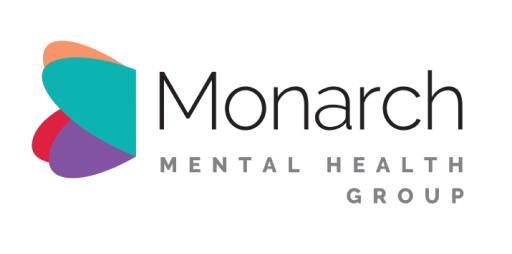Post-Traumatic Stress Disorder (PTSD) is a complex mental health condition that can develop after experiencing or witnessing a traumatic event. It can leave individuals feeling trapped in a cycle of fear, anxiety, and intrusive memories, often interfering with daily life and relationships. While traditional therapies and medications remain vital components of PTSD treatment, an innovative, non-invasive approach called Transcranial Magnetic Stimulation (TMS) therapy is offering new hope to those seeking relief.
What Is TMS Therapy?
Transcranial Magnetic Stimulation (TMS) is a non-invasive treatment that uses magnetic fields to stimulate specific areas of the brain associated with mood regulation and cognitive function. It involves placing a magnetic coil against the scalp, which emits repetitive magnetic pulses. These pulses activate nerve cells in the brain, promoting healthier brain activity.
TMS is an outpatient procedure, meaning it doesn’t require anaesthesia or hospital stays. Sessions typically last between 20 and 40 minutes, and patients can usually resume normal activities immediately after each session.
The Research Behind TMS and PTSD
A growing body of research has highlighted the effectiveness of Transcranial Magnetic Stimulation (TMS) in treating PTSD. Notably, a 2018 study published in The American Journal of Psychiatry found that TMS significantly reduced PTSD symptoms in veterans who had not responded to conventional treatments, including medication and talk therapy. This promising outcome suggests that TMS may be particularly valuable for individuals with treatment-resistant PTSD.
Further evidence comes from a 2019 study that explored the combined use of TMS and psychotherapy. Researchers discovered that when TMS was used alongside psychotherapy, participants experienced greater symptom improvement compared to those who received either treatment alone. This supports the idea that TMS can enhance the benefits of traditional therapies by improving brain function and emotional regulation, making it easier for patients to process traumatic memories.
Other studies have also documented improvements in depression and anxiety symptoms, which often accompany PTSD, following TMS therapy. This is significant because managing co-occurring conditions is often critical to achieving meaningful recovery from PTSD.
Although research is ongoing, the existing evidence suggests that TMS is an effective and innovative treatment option for people grappling with the relentless impact of trauma. It holds the potential to offer new hope and a sense of relief to those who have felt stuck in the cycle of PTSD symptoms for far too long.
How TMS Works for PTSD
PTSD is often linked to dysregulation in brain circuits involved in mood, fear response, and memory processing, such as the prefrontal cortex and the amygdala. These circuits can become overactive or underactive, contributing to symptoms like hypervigilance, flashbacks, nightmares, and emotional numbness.
TMS PTSD therapy helps to modulate these circuits by stimulating targeted areas of the brain. Research has shown that this can reduce the hyperactivity of the amygdala (responsible for fear responses) and strengthen the regulation provided by the prefrontal cortex. As a result, patients often experience a reduction in intrusive thoughts, emotional reactivity, and other debilitating symptoms of PTSD.
Benefits of TMS for PTSD
One of the most compelling aspects of TMS therapy is its effectiveness, particularly for individuals who have not responded well to traditional treatments like medication or talk therapy. Here are some key benefits: Non-invasive and medication-free: TMS doesn’t require medications, making it an appealing option for those who cannot tolerate or do not want to take antidepressants or other medications.
- Minimal side effects: Unlike medications, which can cause a range of side effects, TMS has relatively few. Some patients report mild discomfort at the treatment site or a slight headache, but these side effects typically resolve quickly.
- Targeted treatment: TMS directly stimulates brain areas implicated in PTSD symptoms, providing a focused approach to treatment.
- Improved quality of life: Many patients experience improved mood, better sleep, and a general sense of relief from the distressing symptoms of PTSD.
Is TMS Right for You?
While TMS therapy has shown promising results for PTSD, it’s not suitable for everyone. Individuals with metal implants in or around the head (such as aneurysm clips or cochlear implants) may not be eligible due to the risk of magnetic interference. Similarly, people with a history of seizures may be advised to consider other treatments.
However, for those who have struggled to find relief through traditional approaches, TMS can be a valuable alternative. It’s particularly well-suited to individuals who:
- Experience persistent PTSD symptoms despite psychotherapy or medications
- Are looking for a medication-free option
- Want a treatment with minimal downtime and few side effects
- TRD treatment resistant depression, anxiety and PTSD. Patients unable to tolerate antidepressant side effects
Complementing Traditional Treatments
It’s important to note that TMS therapy is not a standalone cure for PTSD. Instead, it can be a valuable addition to a comprehensive treatment plan that includes:
- Psychotherapy: Evidence-based therapies like Cognitive Behavioural Therapy (CBT), Eye Movement Desensitisation and Reprocessing (EMDR), or exposure therapy remain essential for processing traumatic memories and learning new coping strategies.
- Lifestyle support: Regular exercise, mindfulness practices, and healthy nutrition can all contribute to better mental health outcomes.
- Medication, when needed: For some individuals, medications may still play a role in managing certain symptoms alongside TMS.
By integrating TMS therapy with these approaches, individuals can create a more robust and tailored recovery path.
Finding TMS Treatment in Australia
If you or someone you know is struggling with PTSD and wants to explore TMS therapy, it’s crucial to seek care from a trusted mental health provider with experience in TMS and trauma-focused care. Monarch Mental Health Group (MMHG), with multiple mental health clinics across NSW, Queensland, and Victoria, offers comprehensive psychiatric-led care, including TMS therapy. MMHG’s team of experienced psychiatrists, psychologists, and nurses collaborates to create personalised treatment plans designed to support your recovery journey.
If you’re ready to break through trauma and find relief from the persistent grip of PTSD, contact us today or consider discussing TMS therapy with a qualified professional. With the right support, healing is possible—and you don’t have to face it alone.
FAQs
Is TMS therapy suitable for everyone with PTSD?
TMS therapy is highly effective for PTSD, but it isn’t suitable for everyone—especially those with metal implants in the head or a history of seizures. Monarch Mental Health Group offers comprehensive assessments with our experienced psychiatrists to determine if TMS is right for you. If you’re interested, speak to your GP or psychiatrist about a referral to one of our clinics for an expert evaluation.
How long does a TMS treatment course for PTSD take?
A typical TMS course for PTSD involves 20–35 sessions over four to six weeks, with each session lasting about 30 minutes. At Monarch Mental Health Group, we provide TMS therapy in comfortable clinic environments across NSW, Queensland, and Victoria. Our psychiatrist-led team closely monitors your progress to ensure the best outcomes throughout your treatment journey.
What side effects are associated with TMS therapy?
Most patients report only mild side effects like a tapping sensation on the scalp or a mild headache, which usually subside shortly after each session. Monarch Mental Health Group prioritises safety and comfort during TMS treatments, and our clinical team is always available to discuss any concerns. A referral from your GP or psychiatrist will get you started on a safe, monitored path to recovery.
Can TMS therapy be combined with other treatments?
Absolutely! TMS therapy for PTSD is often combined with psychotherapy, medication, and lifestyle changes to create a comprehensive treatment plan. At Monarch Mental Health Group, we take a holistic approach—our psychiatrist-led team tailors your care to help you recover. A GP or psychiatrist referral is required, so speak to them today to explore how TMS can fit into your overall treatment plan.
How can I start TMS therapy for PTSD at Monarch Mental Health Group?
To get started with TMS therapy at Monarch Mental Health Group, you’ll need a referral from your GP or psychiatrist. Once you have it, our experienced clinical team will provide a thorough assessment and develop a treatment plan tailored to your PTSD symptoms. With clinics across Australia, including in NSW, Queensland, and Victoria, you’re never far from the support you need.
.png)
About The Author
Dr Ted Cassidy
Dr. Ted Cassidy is a psychiatrist and co-founder of Monarch Mental Health Group in Australia, which provides innovative treatments for depression, PTSD, and anxiety. Monarch Mental Health is recognized as Australia's first outpatient clinic offering assisted therapy and is the largest provider of outpatient magnetic stimulation therapy.

